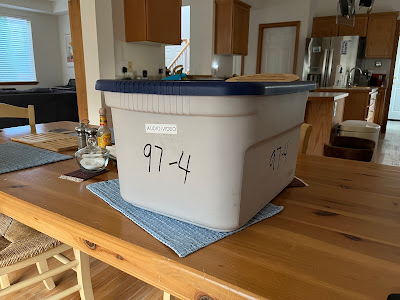I went through a lot of technology during my first 12 years years of PC ownership, where I iterated through computers every two years and constantly updated our voice and network connectivity. In 1995 we moved into our first house; after two years we had a basement full of accumulated techno-crap, which I cleaned up and out. I re-organized all the spare gear I kept in the dungeon into four storage tubs:
- Computer cards and peripherals
- A/C cords extension, and assorted gizmos like suicide strips
- Telephone and Ethernet supplies
- Audio and Video
They labeled were with a sequence number and year, as in:
I thought I would be at adding them in the following years. That didn't happen, which is a good thing. The reasons are subtle, but obvious in hindsight:
- I had moved four times in the ten years of and after my first computer, but after 1995:
- We lived in Stoneham 12 years, and
- We have been here in Kenmore for 15 years (and counting).
- We now call professionals to run new phone, network, and video drops.
- Technology has stabilized and better packaged:
- Our two year upgrade cycle of computers is now six+.
- The gigabit Ethernet network I installed in 2007 is still running.
- External connectivity via USB, HDMI, WiFi, and BT are (mostly) past their teething problems, and (usually) just work.
… maybe there is a fifth tomb, the size of a small room. Sigh.






